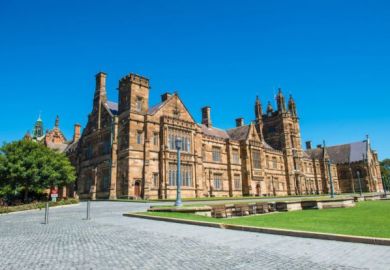Australia’s representative university body has tightened up the way it evaluates student sexual abuse as it rolls out a new national stocktake of the issue.
This year’s student safety survey, which commences on 6 September, features key methodological differences from the inaugural study conducted five years ago by the Australian Human Rights Commission (AHRC).
Universities Australia (UA) said the results of the 2021 survey, to be released early next year, would not be directly comparable with those in the AHRC report. But the new analysis will be “more in line with best practice”, said chief executive Catriona Jackson.
“We’ve made some substantial refinements, which means the data will simply be more robust. We’re hoping for more comparability across a broader range of data sources.”
In the last analysis, which attracted 30,000 respondents, 1.6 per cent of students reported having been sexually assaulted in university settings while 26 per cent said they had been harassed.
But the report contained inconsistencies that made the results difficult to interpret. It assessed harassment over one year but assaults over two. It divulged the proportion of harassment – but not assaults – that had occurred while students were travelling to or from university, and that was therefore outside universities’ control.
The survey also defined harassment in great detail, specifying 14 “behaviours” from “staring or leering” to sexually suggestive comments, jokes, intrusive questions and “inappropriate physical contact”. But it used a broad definition of sexual assault, prompting concerns that the questions were too open to interpretation.
Ms Jackson said such inconsistencies had been addressed. “The aim is to get the best possible information we can, so universities can do the best possible job of improving their practices,” she said.
“Universities want to know what’s happening to their students, regardless of where they might be. International students are included in the survey, and if they’re in another country, the questions go to that as well.”
Ms Jackson said she expected “quite different patterns” of sexual misconduct compared with the 2016 survey, largely because of the pandemic. “There are serious concerns about a very substantial rise in abuse [via] phone, email and internet. Unfortunately, as people are more confined, there is more home-based or domestic sexual abuse. So we’re assuming we will find increases.”
The confidential online survey takes place over four weeks, randomly sampling up to 10,000 students and recent graduates from each university. It will be undertaken on behalf of UA by the Australian National University’s Social Research Centre.
Register to continue
Why register?
- Registration is free and only takes a moment
- Once registered, you can read 3 articles a month
- Sign up for our newsletter
Subscribe
Or subscribe for unlimited access to:
- Unlimited access to news, views, insights & reviews
- Digital editions
- Digital access to THE’s university and college rankings analysis
Already registered or a current subscriber?










